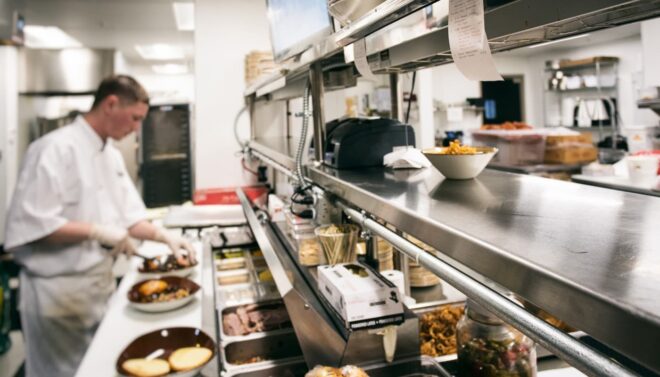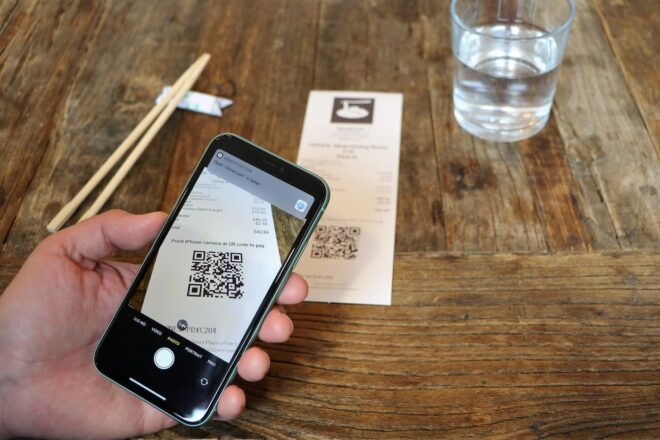Free bar opening and closing checklists
Editorial Team
5 min read
Want to know how to create a fun and lively bar experience? The secret isn’t in your background music—rather, it’s how efficient your operations are and how confident your team is. One of the most essential ways to achieve that is also one of the easiest: with an opening and closing checklist.
When it comes to managing busy, fast-paced work environments, having a checklist of responsibilities for your team can streamline day-to-day operations and help ensure all tasks get completed. Establishing bar opening and closing checklists can be used to train new staff, keep your team on track, and better ensure that each shift goes as smoothly as possible. And, it can be an effective way to delegate tasks to bartenders, barbacks, and support staff.
Here are some key items to include in your opening and closing procedures.
Bar opening checklist
Many activities come with operating a bar, so you’ll want to be meticulous in creating your bar opening checklist. Consider that this list doesn’t just help your bar run more smoothly, it also helps your team prepare mentally and physically for the upcoming shift, easing stress levels and helping them start the shift with confidence in an established routine. When your bartenders are set up for success with a checklist, they are also better prepared to take orders and tend to customers quickly and efficiently.
As you create your checklist, you can divide tasks by type, time (of day, month, or year), or staff role. Below are just a few examples of how to create effective categories and lists.
1. Prepare the environment
- Unlock entrances and exits. Do a brief property check to make sure no safety breaches have occurred.
- Turn on signage, indoor and/or outdoor lights, and music.
- Check the thermostat, fans, and any other factors that might play into creating a comfortable experience for customers.
2. Stock inventory
- Check stock levels of essential items including alcohol, mixers, garnishes, and glassware.
- Restock supplies as needed, being mindful of perishable items that may need to be rotated.
- Stay on top of inventory needs so you’re always prepared.
3. Set up the bar
- Wipe down the bar, bar stools, and tables.
- Set the bar with menus, napkins, straws, and other beverage/food utensils.
- Turn on your bar/brewery POS system.
- Fill ice wells.
- Prepare and refill the bar’s mise en place station.
4. Brief your staff
- In addition to opening tasks, you may also want to offer a daily briefing to review promotions, menu specials, or other special instructions with your staff.
- Remind individual staff members of any specific responsibilities, while setting a tone for open communication and teamwork.
Bar closing checklist
Establishing a bar opening checklist is just half the battle. You’ll also need a bar closing checklist in order to prepare your bar for the next day’s shift. Like your opening checklist, how you categorize your tasks will depend on the specific needs of your business. In addition to organizing lists by type of tasks, you might consider sub-dividing tasks by staff roles or responsibilities–keep your bartenders on track with a bartender duties checklist or streamline overall operations with an opening and closing procedures checklist for your manager(s).
For closing, expect to spend a fair amount of energy on cleaning. Some bar checklist closing tasks can include:
1. Manage inventory
- Take stock of inventory levels after the shift to prepare for the next shift.
- Note any diminishing items, especially those in high demand.
2. Clean and organize
- Perform a thorough cleaning routine by sanitizing all surfaces, including the bar, stools, and tables.
- Sweep, mop, and/or vacuum floors and carpets.
- Empty trash bins and replace bags.
- Clean the bathroom(s) including trash removal and sanitizing surfaces.
- Organize the bar area, with all tools and utensils properly stored.
- Wash and store all cups and utensils in designated areas.
- Clean the soda gun.
- Burn extra ice and sanitize ice wells.
3. Debrief your staff
- Go over any incidents or issues that arose during the last shift.
- Share customer feedback—it’s particularly rewarding to end the day with positive reviews.
- Communicate any changes impacting the next shift, like changes in responsibilities or in the schedule, for example, to allow for a smooth transition.
4. Take care of cash handling
- Count cash drawer, cross-referencing against sales records for accuracy.
- Calculate and distribute tips.
- Secure cash in the safe, following established protocols.
5. Close the premises
- Turn off your POS system, bar equipment, ice machines, and any other equipment that requires a proper shutdown.
- Check premises inside and outside.
- Lock entrances and exits.
You don’t have to shoulder creating and managing checklists all alone. It can be helpful to ask your team for input on what should be included on your bar opening and closing checklists. And, your staff may appreciate being invited to provide their input. Be sure to revisit and update these lists often.
If your bar is located within a restaurant, read more about how to establish restaurant checklists for daily operations–a useful resource to add to your bar opening checklist.
Learn more about how a Clover bar POS system can help you improve efficiencies, reduce costs, and do what you do better. With a Clover POS system, you’re able to accept all payment types, manage employees with ease, and stay connected with customers.
Related Posts
Health code violations: What they are & how to prepare for an inspection
How to make payments as easy as possible for your customers and for you
Popular Topics
Stay In Touch
Sign up and learn more about Clover.
Thank you for your subscription!
Recent Stories
- Jewelry store supplies and equipment needed for opening day
- How small businesses can use employee discounts to retain staff
- Tips and tricks for opening an outdoor pop-up restaurant
Please share your contact information
to access our premium content.
Thank you for sharing your contact information.
Download Now





